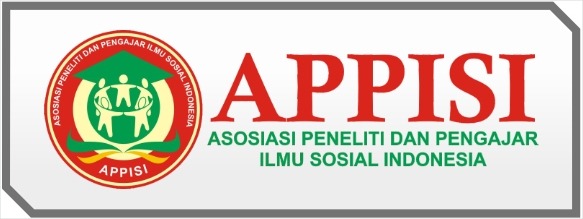CYBERBULLYING YOUTH ON SOCIAL MEDIA
DOI:
https://doi.org/10.61994/jipbs.v1i2.15Keywords:
Cyberbulliying, Social Media, YouthAbstract
The purpose of this study is to analyze how often perpetrators carry out cyberbullying actions. The type of research used is a type of survey. Respondents resulting from the survey amounted to N = 58 who were determined using data collection carried out by distributing online questionnaires through the Google form. Meanwhile, this study used the Mixed Method method with a sequential explanatory design. The results of this study can be concluded that most cyberbullying perpetrators have carried out cyberbullying and the majority are involved in low-level cyberbullying with an age range of 17-18 years.
References
Abdullah, T. (1974). Youth and Social Change. Jakarta:
Azwar, S. (2017). Psychology Research Methods. Yogyakarta: Learning Library.
Benitez, J. & Justicia, F. (2006). Bullying: Description And Analysis Of The Phenomenon. Electic Journal Of Research In Educational Psychology, 4(2).
Fauziah. N. (2016). cyberbullying in Indonesia: Case Analysis of Rizky Firdaus Wicaksana Alias UUS. Non Seminar Papers, 7.
Gillette, Petter et al. (2009). Bullying At School & Online. USA: American Association Of School Administrators.
Juditha, Christiany. (2011). Use of the Facebook Social Networking Site on Adolescent Behavior. Comtech Journal. Vol. 6, No. 1.
Kaplan Andreas M. & Haenlein Michael. Users of the world, unite! The challenges and opportunities of social media, Business Horizons, Vol. 53, Issue 1. page 61.2010.
Manuel, NR (2011). Cyber-bullying: Its recent emergence and the need for legislation to protect adolescent victims. Loyola Journal of Public Interest Law, 13 (1), 219- 252.
National.tempo.co/amp/22138/marah-on-facebook-because-jealous-demanded-5-months-prison.
Pandie, M. & Weismann (2016). The Effect of Cyberbullying on Social Media on Reactive Behavior as Actors and as Victims of Cyberbullying in Christian Students at the Makassar National Middle School. Jaffray Journal. 14(1), 43-62.
Patchin, JW & Hinduja, S. (2012). cyberbullying Prevention And Response, Expert Perspectives. New York: Routledge. On line. USA: American Association of School Administrators.
Pecino, RM, & Duran, M. (2016). I Love You But I Cyberbully You : Role of Hostie Sexism. Journal Of Interpersonal Violence, 1-14.
Rifauddin, M. (2016). The Phenomenon of Cyberbullying in Adolescents (Facebook Social Media Analysis Study). Journal of Library Science, Information and Archives Khizanah Al-Hikmah, 4(1),, 35-44.
Rudy, Trishna. (2010). Information Regarding Bullying: Acts of cyberbullying. Bandung: Rajawali Press.
Sittichai, R. (2014). Information Technology Behavior Cyberbullying in Thailand: Incidence and Predictors of Victimization and Cyber-Victimization, Asian Social Science, 10 (11), 132-138.
Sugiyono. (2012). Combination Research Methods (Mix Methods). Bandung: Alphabet.
Sugiyono. (2013). Quantitative Research Methods, Qualitative, and R&D. Bandung: ALPHABETA, cv.
Willard, NE (2007). cyberbullying and Cyberthreats: Responding to the Challenge of Online Social Aggression, Threats, and Distress. Jakarta: Research Press.
Downloads
Published
Issue
Section
License
Copyright (c) 2023 M. Jorgie Arroyandy, Sandro Saragi, Muhammad Akbar, M Iqbal Andriano Bengkulah, Jimi Mardiansyah, Muhammad Naufal Luthfi, Mahesa Belanti, Siti Fatimah, Bayu Sefryian Saputra

This work is licensed under a Creative Commons Attribution-ShareAlike 4.0 International License.

Journal of Islamic Psychology and Behavioral Sciences by https://jurnal.dokicti.org/index.php/JIPBS/index
is licensed under a Creative Commons Attribution-ShareAlike 4.0 International Licensel








